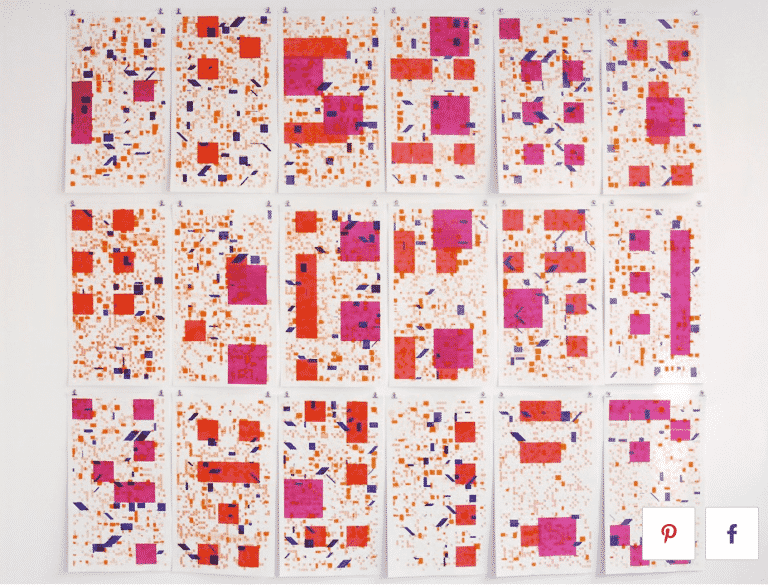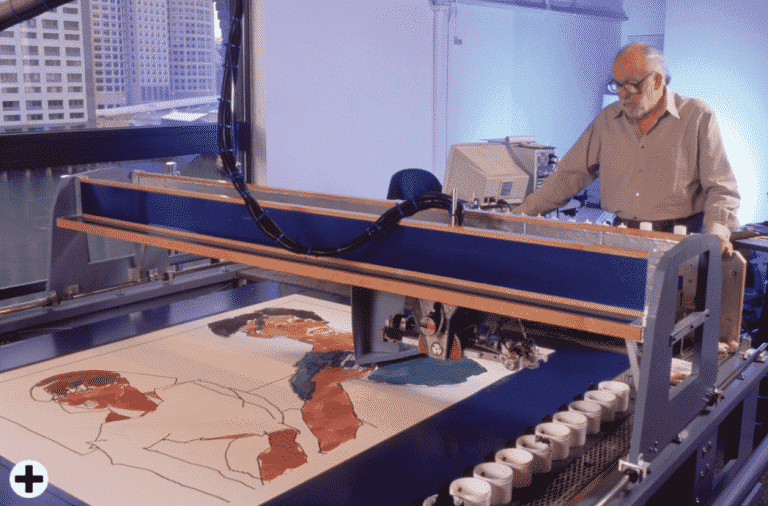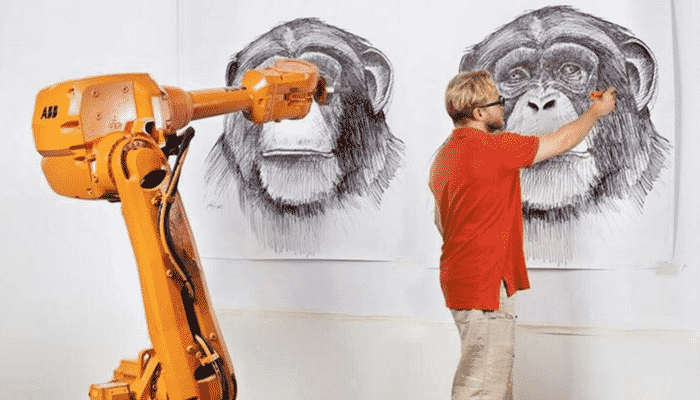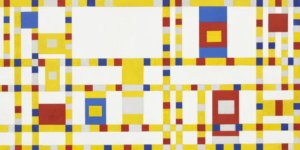By definition, art is the expression or application of human creative skill and imagination, typically in a visual form such as painting or sculpture.
But what if a piece of artwork was made by a robot operated by a human? Is it still “art” then?
And while many are prepared for robots to make life easier by automating otherwise mundane processes, many aren’t quite sure how they feel about artwork that was not literally created by human hands.
When you think about art, do you think about skill and imagination and not automation? Do you link art to programmed processes, software, and mechanical arms? Many do not. However, it’s not stopping more and more people who are combining art with tech, and it appears that the robot revolution is making its presence known in the art world.
Turing Tests in Creative Arts
In fact, the very first Robot Art competition took place just last year. The contest was hosted by Andrew Conru, founder of the social networking company FriendFinder Networks. The idea behind the Robot Art competition is to “create a robot that paints with a brush like a classical master.” The contest has two categories – Telerobotics, which is for robots that collaborate with humans, and Fully Automated painting robots.
The two categories represent the opposing views held by those working in the fields of robotic creativity. Telerobotic machines are seen as collaborating with humans for the resultant artwork, while for the ‘fully automated’ camp the idea is to completely remove human input and have the robot create the artwork autonomously.
The Robot Art competition 2016 1st prize winner was a robot created by National Taiwan University named TAIDA. TAIDA’s Still Life was submitted in the Fully Automated category and won an impressive $30,000.
“With TAIDA’s Still Life, we were particularly struck by the relative sophistication in the robot’s color mixing,” said a judge about the robot’s work.
One of last year’s competitors is an interaction designer from Carnegie Mellon University named Yeliz Karadayi who had this to about telerobotics: “I certainly hope that this competition will start a dialogue in which people understand that robots are best utilized as collaborators with humans, instead of as replacements for humans.”

And while many are willing to debate the validity of art “created” by robotics, it’s evident that art made by robotics already has a following. In fact, the winners of the Robot Art competition is based on a combination of public voting, judges who consist of working artists, art critics, and technologists. Public voting consists of over 3,000 Facebook users with a valid account.
The Robot Art competition 2017 winner is PIX18 / Creative Machines Lab by Columbia University and won $40,000.
Considering how the grand prize in the Robot Art competition has increased since last year, it appears that the attention around art made by robots is not only on the rise but also proving to be popular by the mainstream audiences?
Artwork produced by a robot can be considered innovative but can it be truly described “creative”?

I Think Therefore I Am
However you feel about art made robots, it may surprise many to know that robotic painting has been around since the early 1970s with software written by artist Harold Cohen named AARON. Initially, it drew in black and white abstract drawings and eventually evolved to more complex imagery in color.
Although Cohen has never claimed that AARON is “creative,” he does ask, “If what AARON is making is not art, what is it exactly, and in what ways, other than its origin, does it differ from the ‘real thing?’ If it is not thinking, what exactly is it doing?”


![[Left] Kusama with her piece Dots Obsession, 2012, via AWARE, [Right] Yayoi Kusama (Courtesy Whitney Museum of American Art) | Source: thecollector.com](https://www.artdex.com/wp-content/uploads/2024/04/Left-Kusama-with-her-piece-Dots-Obsession-2012-via-AWARE-Right-Yayoi-Kusama-Courtesy-Whitney-Museum-of-American-Art-Source-thecollector.com--300x172.png)




